|
To show our solution more clearly, we’ll substitute clear containers with liter markings for the red pails.
|
 |
|
We’ll start by filling the 11-L container from the pond.
|
 |
|
Next we pour from the 11-L container into the 6-L container until it is full, leaving 5 L (5.3 qt) in the larger container.
|
 |
|
Now we dump the contents of the small container into the pond . . .
|
 |
|
. . . and pour the 5 L from the large container into the smaller one.
|
 |
|
Next, we fill the large container from the pond.
|
 |
|
Now we pour as much as we can from the large container into the smaller one. That fills the small container and leaves 10 L (10.6 qt) in the large one.
|
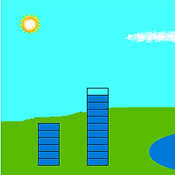 |
|
Now we dump the contents of the small container back into the pond . . .
|
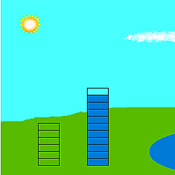 |
|
. . . and pour as much as possible from the large container into the smaller one. This leaves 4 L (4.2 qt) in the large container.
|
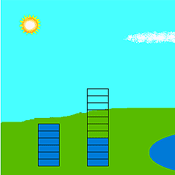 |
|
Next we dump the contents of the 6-liter container back into the pond . . .
|
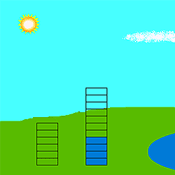 |
|
. . . and pour the contents of the large container into the smaller one.
|
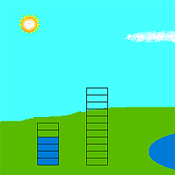 |
|
Now we again fill the 11-L container from the pond . . .
|
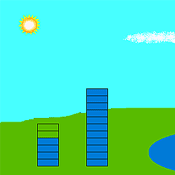 |
|
. . . and pour as much as possible from the large container into the smaller one.
|
 |
|
We dump the contents of the 6-L container back into the pond . . .
|
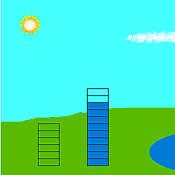 |
|
. . . and pour as much as possible from the large container into the smaller one.
|
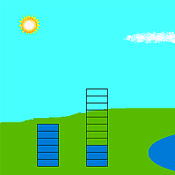 |
|
Again we dump the contents of the 6-L container into the pond . . .
|
 |
|
. . . and transfer the contents of the large container into the small one.
|
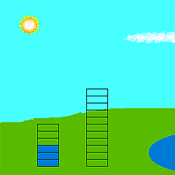 |
|
We fill the 11-L container from the pond.
|
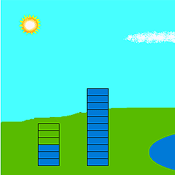 |
|
Finally, we pour as much as we can from the 11-L container into the 6-L container. This leaves 8 L in the large container.
|
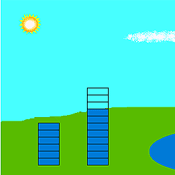 |
|
We’re done. It’s time to go home.
This process is repetitious. On the way to getting 8 L, we also had 10 L and 9 L (9.5 qt). And, we could continue and end up with 7 L. We also isolated 5, 4, and 3 L along the way.
In fact, we can measure out any whole number of liters from 1 through 11 using the method described above. This will work for other combinations of containers, not just 6 and 11 L. The trick is that the quantities must be mutually prime: Two numbers are said to be mutually prime if there is no other whole number, except 1, that can be evenly divided into both of them. For example, 7 and 12 are mutually prime. So are 4 and 9.
For more details about this puzzle visit Cut the Knot.
|